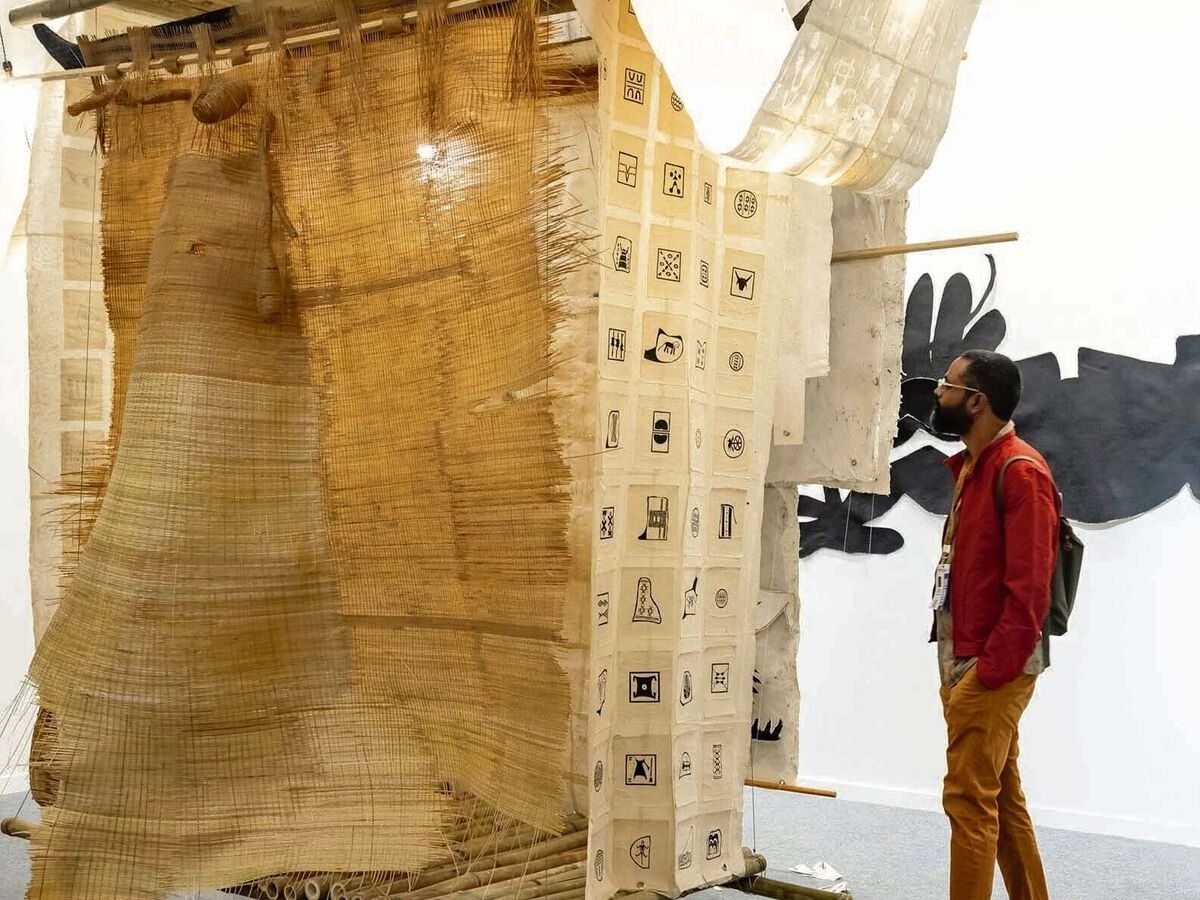Art as an investment isn’t a new idea, but there seems to be a fresh infusion of interest, led by aspiring collectors in their 20s, 30s, and 40s. In a departure from convention, many are looking for art that is against the grain—diverse, digitally produced, carrying a value that isn’t merely measurable with money. They are looking for personal stories that resonate with them.
“A major shift happened during the covid-19 pandemic,” says Dinesh Vazirani, co-founder of Saffronart, a leading auction house and gallery with offices in Mumbai, Delhi, London and New York. “Art is a knowledge product and a lot of people had the time to learn more about it during the lockdowns.”
As his business turns 25 this year, Vazirani has been witness to changing patterns of buying and selling. “Today’s consumer is more educated about art. They aren’t just looking at the name, signature and size to make their purchase decisions,” he adds. “They want to understand the artist’s journey and provenance.”
The conscious consumer
Two decades back, when Farah Siddiqui started out as an art adviser, it was difficult for her to find someone to design a functional website. “Now you can buy and sell highly priced art online,” she says. Along with art adviser Aqdas Tatli, Siddiqui put together major initiatives in India, including Elephant Parade in 2017. She founded Cultivate Art, a Mumbai-based space to bring together emerging artists and the next generation of collectors, in 2018. “The younger generation is more global in its outlook,” she says. “They are not stuck to the idea of region, gender and nationality, like many of the earlier collectors of the Tagores, S.H. Raza, F.N. Souza, and Jamini Roy were.”
Significantly the materiality of art has changed. “At one point, oil on canvas was considered the medium. There is no such notional standard anymore,” Siddiqui adds. Individuals, institutions, corporates and other organisations are more open to buying photography, mixed media, video art, installations and digital art.
Pulkit Somani, who founded the advisory platform Desee Art in 2018, mentions a growing interest in environmental art. “Younger buyers are exploring works made with upcycled, ecofriendly, recycled material. I’d say we are going through a sustainable art movement at the moment.”
Investment or appeal
Investing in art, like any other portfolio, is tricky business. “If an absolute newbie came to me looking no beyond the financial value of what they want to buy, I’d ask them not to do it,” says Vaishnavi Murali, founder of Eikowa, a gallery that opened online in 2015, before branching out to physical outlets in Hyderabad and Gurugram. “We wanted to make it easier for people to ask even the basic questions about art,” she says.
In 2018, Eikowa introduced augmented reality to make it easier for potential buyers to visualise a piece of art in their space before buying it. “When it comes to art as investment, people still think of the Masters,” Murali says. “But younger collectors are more open to contemporary artists.”
When it comes to reducing the barrier between art and people, CIMA gallery in Kolkata was one of the early movers in bringing affordable art to a wider audience. In 2009, the gallery started Art Mela, a fair featuring works in the range of ₹1,000 to of ₹3 lakh. “Our aim was to make art comfortable for the wider public,” says Pratiti Basu Sarkar, chief administrator of CIMA. Even the so-called middle class, which is unlikely to spend on art, feels less daunted.
“I don’t think it is only for the affordability, it is also how the art is displayed during Art Mela,” adds Basu Sarkar. “They are mostly unframed and pinned up on strings, like a clothesline. The visitors are not allowed to handle the art, only CIMA staff, with gloves on, can touch it, unpin it, and take it to the payment counter.”
Whether a piece costs a few thousand rupees or runs into lakhs, all experts have one piece of evergreen advice: go by your eyes. “Collecting art is like acquiring a moment in time,” Siddiqui says.
“It’s one of the greatest legacies anyone can leave behind,” adds Vazirani. It is best practice to buy pieces you want to live with—most likely, you will have them around for generations. There are variations, of course. “Some people like to collect a few artists. They want to build depth in a field,” Vazirani says. “It’s not necessary to have a sprinkling of different styles to have a well-rounded collection.”
Then there are others who want to build a portfolio, or a niche, aligned to their tastes and interests. “At times you have to prioritise between aesthetic appeal and investment,” adds Somani. “If you have to choose between a great artwork by an average artist and an average artwork by a great artist, my advice will be to pick the artist over the art.”
Ultimately, understanding the motivation of the buyer is key to curating a collection. “We start by scoping the objective of the client—whether they are doing it for themselves or they buying it for a different space,” Siddiqui says. “Investing in art is like investing in your culture and generation.”





